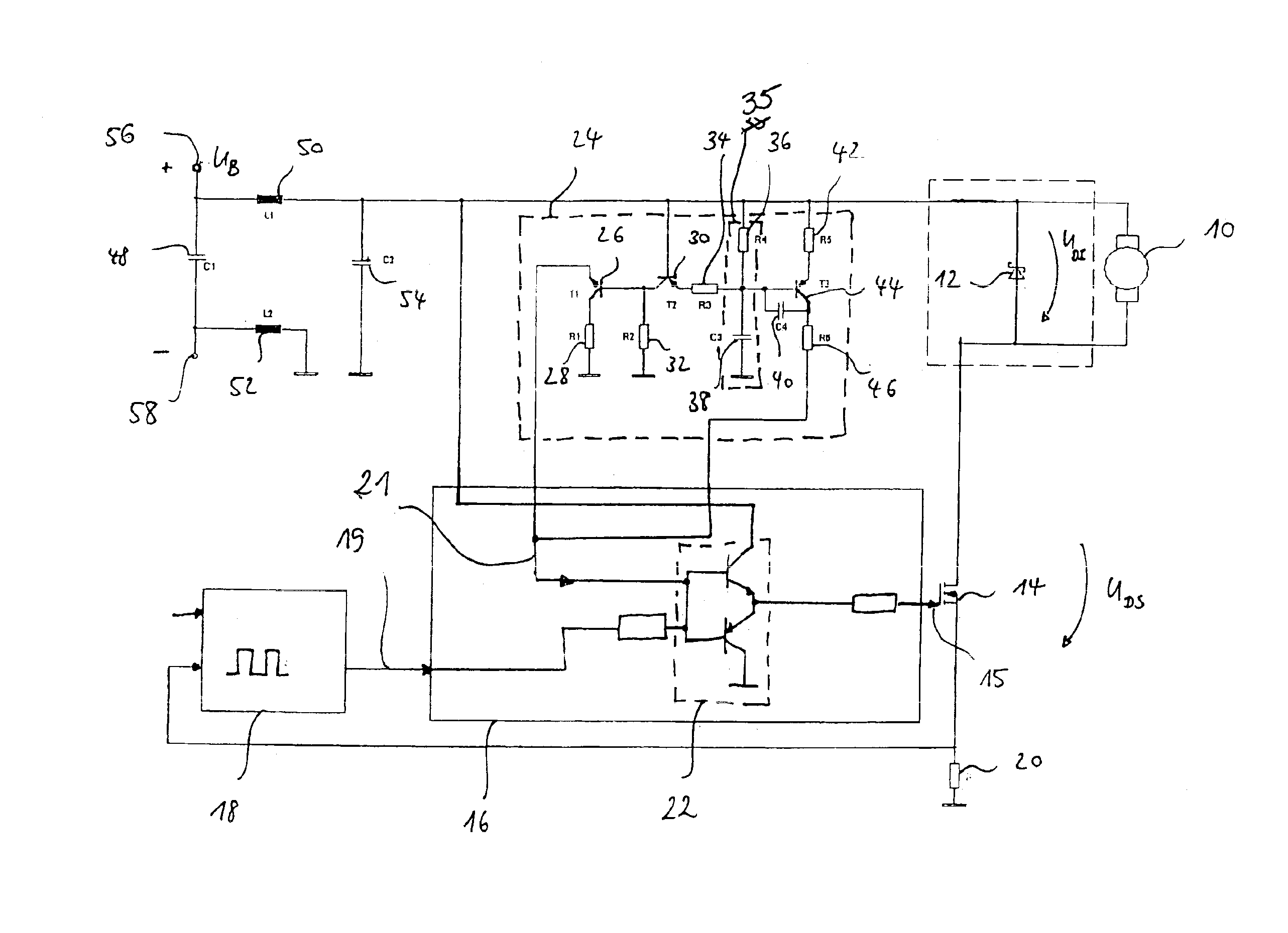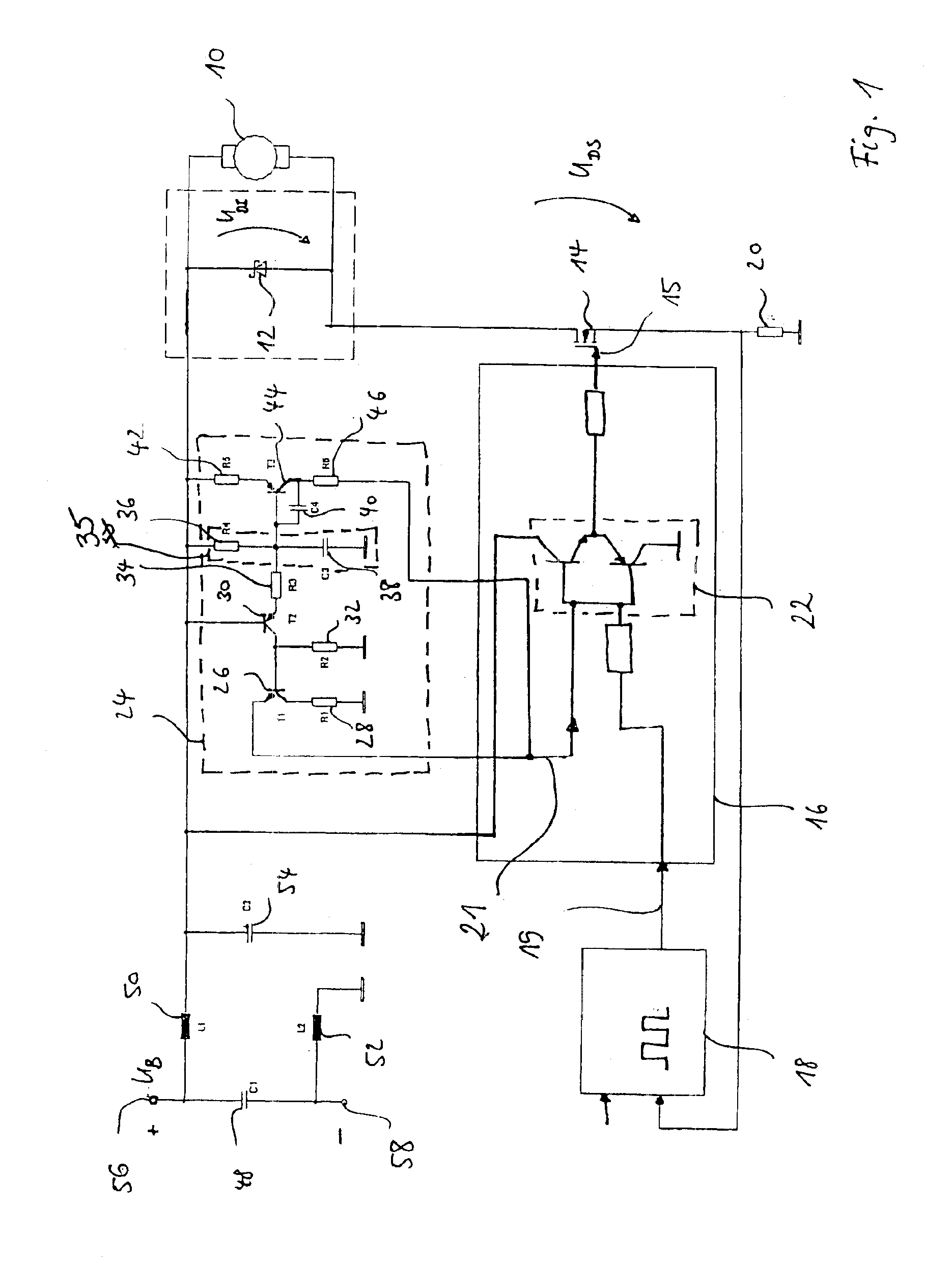Device for controlling a power output stage
- Summary
- Abstract
- Description
- Claims
- Application Information
AI Technical Summary
Benefits of technology
Problems solved by technology
Method used
Image
Examples
Embodiment Construction
An inductive load 10 is provided as the electrical load, such as an electromotor. A recovery diode 12 is connected in parallel to this inductive load 10. Inductive load 10 is connected via power output stage 14. For the detection of the current flowing through power output stage 14, a measuring resistor 20 connected to ground is provided, whose potential is picked off and supplied to a PWM control 18. A setpoint value is also supplied to this PWM control 18. From the setpoint value and the actual value, PWM control 18 generates a control signal which is used by a power output stage control 16 as an input variable. Power output control 16 includes a push-pull stage 22, made up of two transistors whose respective bases are connected to each other in an electrically conducting manner. Both control signal 19 via a series resistor and a feedback signal 21 are supplied to the base of push-pull stage 22 in an electrically conducting manner. Push-pull stage 22 is fed by positive supply volt...
PUM
 Login to View More
Login to View More Abstract
Description
Claims
Application Information
 Login to View More
Login to View More - R&D
- Intellectual Property
- Life Sciences
- Materials
- Tech Scout
- Unparalleled Data Quality
- Higher Quality Content
- 60% Fewer Hallucinations
Browse by: Latest US Patents, China's latest patents, Technical Efficacy Thesaurus, Application Domain, Technology Topic, Popular Technical Reports.
© 2025 PatSnap. All rights reserved.Legal|Privacy policy|Modern Slavery Act Transparency Statement|Sitemap|About US| Contact US: help@patsnap.com



